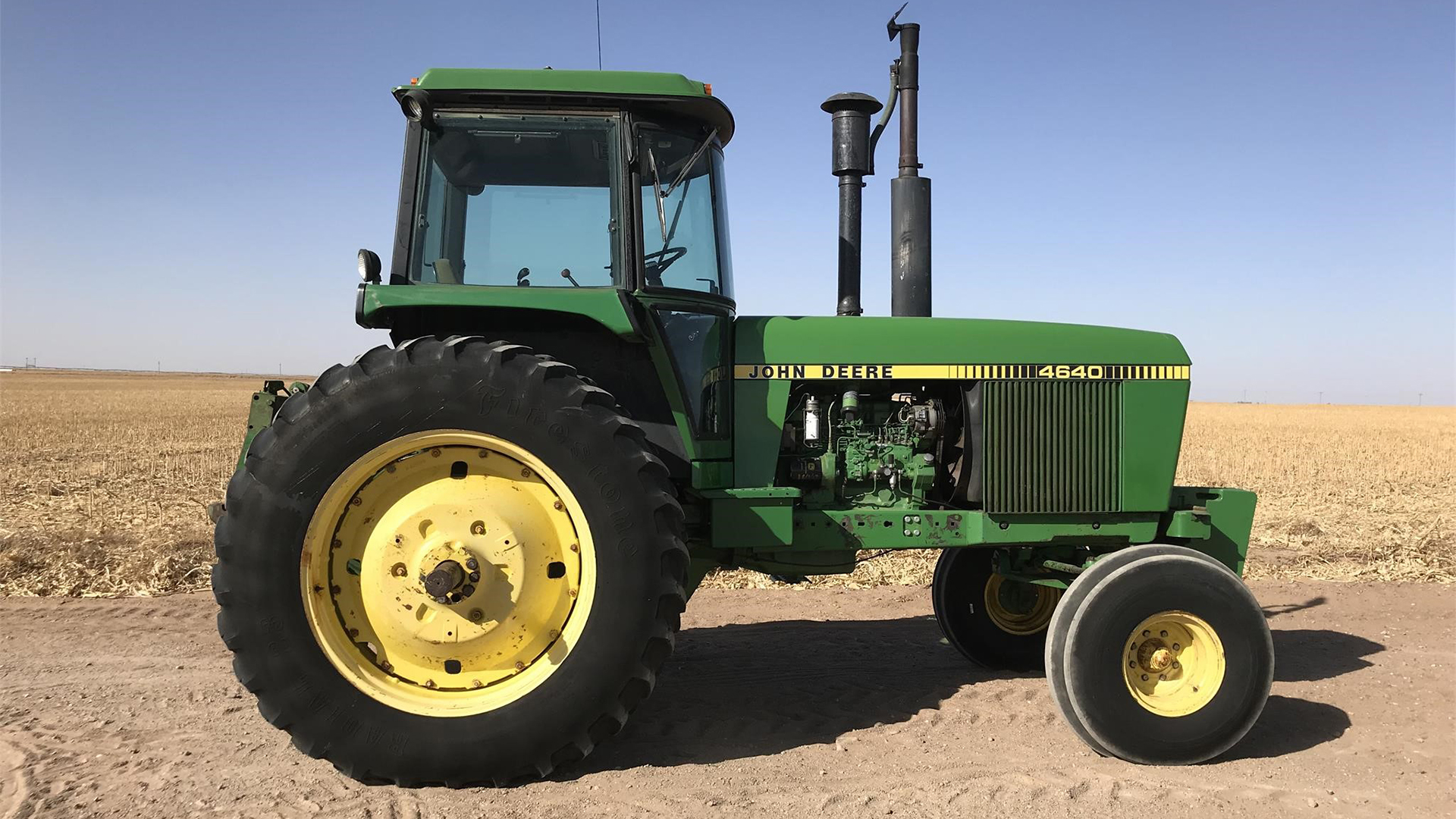

There’s a looming issue for many of America’s farmers, and it’s got nothing to do with climate or trade deals or the EPA. No, what’s really starting to hurt is the price of equipment—more specifically, large machines like tractors, harvesters, and the like. A new tractor in 2019 can cost as much as a damn house, and with DIY fixes often stymied by proprietary software and a lack of available parts, dealer repairs can stretch into the mid-five-figure range. So as the Minneapolis Star-Tribune reports, more farmers are taking a page out of the car enthusiast handbook and seeking out gently-used, simpler, and much cheaper tractors from the 1970s and ’80s.
A lot more farmers, in fact. Enough to drive up the price of something like an 800-hour 1979 John Deere 4640 to over $60,000 at a Minnesota auction last August, which is more than double the price a well-worn example would fetch, but still a bargain compared to a new $150,000 rig. (Tractors’ lives are measured in hours of operation, not miles, with the average hard-working farm tractor logging around 500 hours per year.) Imagine buying a ’79 Pontiac Trans Am with 20,000 miles on it, and you get the picture. The difference is, no farmer is paying that much for a low-hour tractor from the Carter Administration without planning on using it day in and day out until it breaks—then fixing it on their own, on the cheap.
“They cost a fraction of the price, and then the operating costs are much less because they’re so much easier to fix,” said Kris Folland, a Minnesota farmer, to the Star Tribune.
While a major repair—such as an engine or transmission—may cost $15,000 on a Malaise-era tractor, this far undercuts the price charged by a dealership to fix a modern, software-riddled machine. As manufacturers pack more technology than ever into today’s tractors, they’ve also made it next-to-impossible for people to wrench on their own rigs by locking key systems behind firewalls only a dealer can unlock, using proprietary tools in assembly, and limiting the resale of spare parts.

Angry farmers have waged a very public battle with John Deere over this issue for several years now as right-to-repair bills of various scopes are being considered by over a dozen state legislators around the country, including Minnesota. Currently, only Massachusetts has a law in place, and it’s limited to cars—but its implementation in 2013 is why everyone in the country, normal buyers and indy shops, can access the same diagnostic information and manuals for their 2002-newer cars that were previously limited to franchise dealerships (for a price, but still). A large majority of farmers are eager to see the same thing happen with tractors.
Because of all this, those old models are in high demand. Sellers, including traditional farm equipment auction houses, know this and the effect is clear. Tractors that cost around $20,000 a few years back, such as a 1979 John Deere 4440 series, are now fetching nearly $45,000. Prices have doubled this decade, but that’s still far below the $150,000 to $200,000 you’d pay for a new tractor that’s fundamentally the same vehicle.
But when will the price of throwback equipment reach its peak? That’s yet to be seen. Given their lack of troublesome computer software, as well as taxing emissions equipment, they’re a hard bargain to pass up. And it’s not like these older machines can’t be retrofitted with modern tech such as satellite-guided automatic steering.
“The main reason we do this is to make money,” Folland said. “Older equipment is a way to reduce your cost per bushel to become more profitable.”
Got a tip? Send us a note: tips@thedrive.com